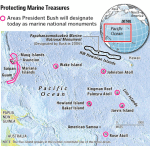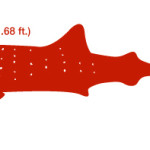
I’m blogging from an Amtrak train en route from New York City to Washington DC for a series of donor and partner meetings through the weekend. But it has been challenging to stay focused while thinking about my staff, colleagues, and friends throughout the Pacific Rim following last night’s (Eastern time) massive earthquake and resultant tsunami in Japan.
I’m still trying to get word from some folks since my Friday workday here in NYC translates to Saturday early morning in many affected areas. What I currently know is my staff in Fiji are well. Some were evacuated to higher ground overnight but the all clear was sounded and folks advised to return to the coastal areas. Apparently the harbor in the Fijian capital of Suva experienced a mild disruption, but nothing remotely catastrophic.
I have yet to hear from colleagues in Indonesia, but news reports indicate the Indonesian archipelago was spared significant tsunami impacts.
My folks in Hawaii on Maui and the Big Island’s Kailua-Kona coast are safe, but did report higher levels of disturbance along Alii Drive in Kona-town and the Kihei area on Maui. Coastal roads flooded and the harbors looked like a spa tub set on high.
Check out this video uploaded to Facebook by a friend in Kona.
Reports I’m reading on Facebook posts from friends on the Big Island and Oahu are alarming. One report of a house floating in Kealakekua Bay on Hawaii Island and massive debris littering the shores in Honolulu illustrate some of the human and ecosystem impacts from this event.
My friends and colleagues in Japan obviously took the brunt of impacts. This email from a coral reef science colleague in Tokyo paints a surreal image:
“I was at the 9th floor in my office having a meeting and it was so scary. The lower floors had almost no effect but the higher you are, the heavier the shake is. You feel as if you are moving about 50cm to a meter sideways within less than a second for few minutes and you can hardly stand. The tall/heavy shelves just behind me fell down after I escaped from the room just after the earthquake started…. so if my move was a bit late, I could have died or been heavily injured….so scary. Inside office is chaos. Luckily, no one was damaged in our office. All the train system is down so I slept in the office with some of my colleagues. Just woke up in the morning but the train system is not recovered yet and cannot go back home. There were some afterquakes still during midnight but it should be OK here.”
It’s still too early to fully assess the death toll, injuries, and economic impacts from this event. I suspect the statistics will be gut-wrenching in all regards. As appropriate aid responses emerge, I encourage you to contribute in some way to help those nations and communities affected.
If you live in any of the possibly affected areas of the Pacific, it is still prudent to exercise extreme caution when entering coastal waters after a tsunami of this magnitude. Usual tides, currents, and conditions are likely to be disturbed or unpredictable, even if a tsunami watch, alert, or advisory has been lifted. Use common sense.






What do the numbers next to the triangles mean?
thanks for the question, tim!
those black triangles and associated numbers are the buoy numbers — you can see them at:http://www.ndbc.noaa.gov/dart.shtml
my thanks to jana goldman at noaa public affairs for the clarification!
Thanks for the explanation Rick – according to the data on the noaa website, it seems that buoy 21418 (japan) and the one s/se of it are the only one that registered levels significantly beyond the ranges of the daily tides, which matches what we heard about the west coast of North America and Hawaii (which fortunately seemed to be on the mid-low tide at the time). I didn’t know those buoys actually existed…I only heard about them in that “the Day After Tomorrow” movie. And just like that movie, some of the ones on the noaa website are out of commission. I wouldn’t have expected to see that kind of scientific accuracy in a disaster movie.
In Chile we were closely watching the reports on CNN of West Coast USA, Easter Island, Central America etc. I for one thought, Hey this isn’t going to be so bad. But in the end the water came about 80m inland at some locations – in some cases flooding seaside businesses that were destroyed in Chile’s quake/tsunami exactly a year ago, and had only just got themselves back together again.
So why were the reports from mid-Pacific islands “not so bad” (from what I could tell) – is it that the swell has more elasticity mid-ocean and energy can ‘go around’, whereas in Chile it had nowhere else to go but up the beach?